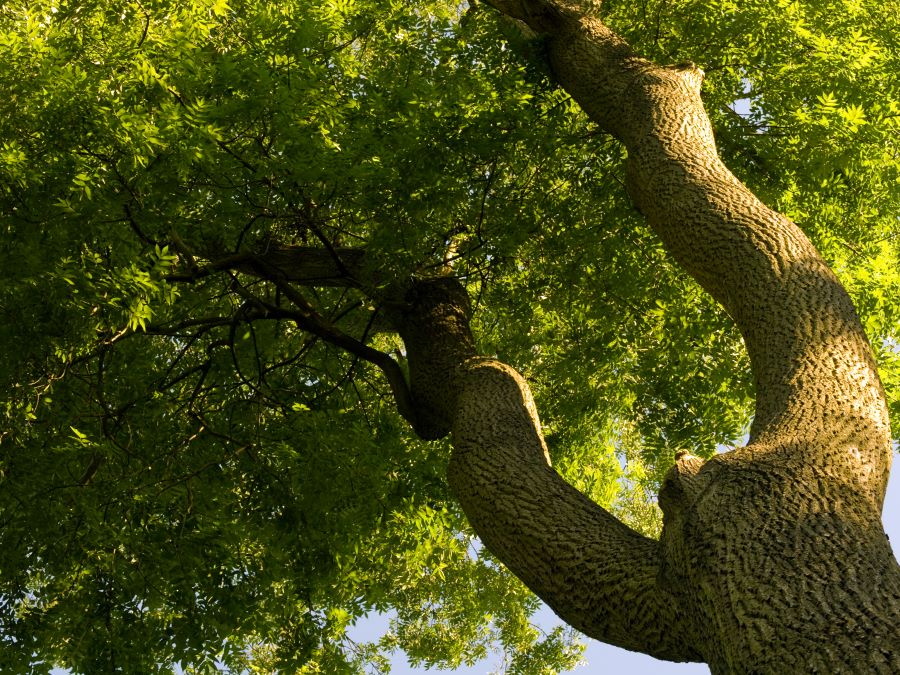
How To Help Stop the Spread of the Emerald Ash Borer
Although this bright metallic-green beetle is smaller than a dime and looks harmless, the emerald ash borer is a highly destructive, wood-boring pest that has killed hundreds of millions of ash trees across North America. This exotic beetle likely entered the country from Asia and was first discovered in southeastern Michigan in 2002.
Ash is a popular shade tree across much of North America and is most prevalent east of the Rockies, but the emerald ash borer is decimating this lovely tree. Ash wood is light and durable, making it a popular option for baseball bats, tool handles, furniture, and flooring.
Where Is the Emerald Ash Borer Found?
In the United States, the largest populations of ash trees are found in the Midwestern and Northeastern states. The emerald ash borer will likely decimate billions of white, green, and black ash trees across North America. Oddly, this invasive pest feeds only on ash trees and is rarely found on other tree species.
The emerald ash borer has been discovered in 36 states and the Canadian provinces of Ontario, Quebec, New Brunswick, Nova Scotia, and Manitoba. Although the adult beetles nibble on the leaves, it is the larvae that feed on the inner bark of the trees that are so destructive. This disrupts the tree’s ability to transport water and nutrients, killing the tree in one to several years.
Does It Have Natural Predators?
One of the reasons the emerald ash borer is so destructive is that food and habitat are plentiful in North America. There are billions of ash trees for it to feed on and fewer natural enemies. In Asia, parasitoid wasps and other predators kill eggs, larvae, and beetles, keeping populations in check.
How Do I Identify an Ash Tree?
If you want to protect trees in your area, it is critical to determine if you have ash trees in your yard. They have pinnately compound leaves, which means they grow opposite each other off of the central stem of the leaf except for the last leaflet at the time and contain 5 to 11 leaflets. Likewise, main stems grow directly opposite each other, not staggered, and often have a diamond-shaped pattern on the bark.

What Are the Signs of an Emerald Ash Borer Infestation?
There are several things to look for in the canopy, leaves, and under the bark of ash trees. To begin, stand back one-half to one tree length to have a good view of the tree crown. A thinning crown and dead branches are signs of the emerald ash borer. Then, approach the tree to look for epicormic sprouts, which are suckers, and a sign the tree is in distress. Then, examine the trunk for vertical bark splits and small, D-shaped holes.
How Can I Help Stop the Spread of the Emerald Ash Borer?
There are a variety of tactics to help mitigate the impacts of this destructive pest.
Do Not Transport Firewood
It’s essential to limit the spread of this beetle to help contain it in specific areas for as long as possible. One of the best ways to prevent its spread to noninfected areas is by not transporting firewood because it can be infested with the pest. This is critical in areas where the emerald ash borer has not been detected.
Unfortunately, infestations around some campgrounds and homes with wood stoves have been connected to the transportation of firewood. Instead of transporting firewood, purchase it where you plan to use it.

Plant Other Types of Trees
Although ash trees are excellent for landscaping, and multiple species are native to North America, arborists in many areas do not recommend planting them because of their vulnerability to this invasive pest. Instead, plant other species recommended in your area that provide wildlife value.
Consider Treating Affected Trees
If you have a tree with an infestation, the options are to cut down the tree and replace it or treat it. If you treat it, there are several different options that involve using insecticides. Some you could do yourself, while others should be done by someone licensed to apply pesticides.
Trunk injection involves drilling holes into the tree to apply insecticide. Although it is the most expensive option, and the holes can damage the tree, trunk injection is also the most effective and long-lasting.
Soil drenching is another approach if you have a tree with a trunk under 12 inches in diameter. You can do this yourself or hire a professional. It involves applying imidacloprid or dinotefuran to the soil around the base of the tree once a year. This comes either as a liquid diluted in water or granules that can be applied directly to the soil. However, this approach can affect other plants, insects, and animals, especially if they are near the base of the tree.
Bark spray involves spraying the lower 5 or 6 feet of the bark of an ash tree with an insecticide once a year. The liquid penetrates the bark and is transported throughout the tree. Unfortunately, the insecticide can blow onto other plants, affecting other insects and animals.
Small Beetle, Big Problem
It’s incredible to think that such a small beetle is causing so much damage across city streets and forests of North America. Sadly, many of these beautiful and valuable shade trees are dying from this invasive pest. However, ongoing efforts have helped save some affected ash trees and slowed the beetles’ spread to new areas.